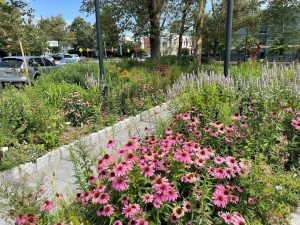By Jose German-Gomez
 In recent years, more and more people have shown interest in making the transition from traditional suburban landscaping to more sustainable, eco-friendly approaches. The use of native plants is becoming more popular, but there is still some resistance in our community to more natural front yard landscaping featuring pollinator gardens and wildlife habitat. There are some myths about natural landscapes, especially in suburban areas.
In recent years, more and more people have shown interest in making the transition from traditional suburban landscaping to more sustainable, eco-friendly approaches. The use of native plants is becoming more popular, but there is still some resistance in our community to more natural front yard landscaping featuring pollinator gardens and wildlife habitat. There are some myths about natural landscapes, especially in suburban areas.
Myth #1: Natural landscaping in front yards looks neglected
In fact, besides their ecological value, native plants can be utilized in the suburban landscape for their beauty and abundant seasonal blooming. A growing trend among modern landscape designers incorporates designs that harmonize with nature and improve wildlife habitat. These landscape designs include butterfly gardens, wildflowers meadows, and mini-forest habitats that attract birds and pollinators. A good selection of native plants will provide a colorful and manicured look with garden interest from spring through fall.
The key trick, as with any home landscape, is for the property to look cared for, and this can be done with native plants just as well as with non-native perennials. It is especially important to keep public-facing edges neat. One approach is to keep a strip of well-maintained lawn along the sidewalk, followed by lower-growing native plants near the edge and taller plants towards the back. Mulching the borders can also help to give your landscape a “finished” look and reassure passersby that the landscape is deliberately designed and maintained. Native shrubs, especially in the more visible parts of the yard, should be kept pruned just as non-native shrubs would be.
While consulting with a professional for your garden project might be ideal, it is not a necessity. There are numerous useful sources on natural landscaping, and by investing a little time in research you can create the design that matches your tastes, supports pollinators and other wildlife, and has the curb appeal that suburbanites crave.
Myth #2: Native plants are weeds
In fact, most of the plants we think of as “weeds,” from dandelions to ragweed to Asian bittersweet to mugwort, among many others, are invasive exotics from Europe or Asia and not native at all. While some beneficial native plants spread too aggressively for use in small spaces, there are usually alternatives that “play well with others” and offer similar ecological benefits. For example, instead of Canada goldenrod, plant the smaller and much more docile caesia (blue-stemmed) goldenrod. Common milkweed can overwhelm a small garden, but rosy milkweed will behave itself while offering the same benefits for monarch butterflies, along with longer bloom times and stunningly beautiful flowers.
Myth #3: Pollinator gardens are dangerous because bees can sting
While all female bees are capable of stinging, stinging typically happens when bees feel their nest or hive is threatened. Bees foraging in your garden are focused on gathering pollen and are not interested in stinging. Furthermore, native bees species tend to be very docile since they are usually solitary or live in very small colonies; remember that a bee dies when it stings, so solitary bees will sting only if extremely provoked. The non-native European honeybees are more prone to sting since they live in large hives, but even they avoid stinging while foraging.
I have been actively working up close and personal with bees in pollinator gardens for decades, and I have never been stung.
Myth #4: Wildlife gardens attract unwanted pests.
Raccoons, and groundhogs have adapted to suburban habitats; large backyards, parks, and open spaces offer habitat with or without native plants. For raccoons, human-supplied food in the form of garbage and pet food are the main attraction, while, as most Montclair vegetable gardeners can attest, it’s the veggies that attract groundhogs, not the native plantings. Mosquitoes depend on standing water, not native plants, and the best control is to reduce standing water on your property. Keep gutters clear, change birdbaths every few days at least, and use mosquito dunk tablets in any standing water that can’t be changed. Even better, set up a mosquito “bucket of doom”!
Many native plantings hold ground through deep roots that absorb strong rains, alleviating poor drainage that allows mosquitoes to breed. Also, a natural landscape invites animals to keep one another in check: dragonflies and bats eat mosquitoes; opossums and birds eat ticks. Common garden snakes prey on slugs, snails, and mice, and wasps and spiders provide insect control. Far from being “pests,” wild residents who visit gardens are part of deeply interconnected communities.
Always keep in mind, that your landscape, no matter how small, is part of a connected whole and could be used either to enhance the general environment or to degrade it depending on your choices. As entomologist Doug Tallamy points out in his book, Nature’s Best Hope, the individual actions of millions of people in and around their homes could create space for nature far greater than the total area of all our national parks. We should view nature not as something existing in distant isolated pockets. We live in nature. It is right here, just outside our windows, and the actions we take in our own yards and communities can provide nature with the lifeline it needs – and nurture us at the same time.
For homeowners, the yard is a piece of land where we are free to do as we like. Let’s rethink how we use that land; we can convert our yards into sanctuaries for nature. Even transforming a portion of our unsustainable lawns into an attractive landscape to sustain beneficial wildlife can help. Tallamy suggests a goal of cutting lawn size in half. Imagine if 50% of Montclair lawns were replaced with pollinator gardens and trees. Beside the direct benefits for wildlife, air quality would improve with less reliance on power lawn mowers and leaf blowers, human health and water quality would improve with less application of herbicides and pesticides, and water would be conserved with less watering of lawns.
The recent air pollution caused by the fires in Canada is a dramatic sign of the climate crisis and a reminder of our connection even to events far away. Local actions, including what you do in your own yard, can have an impact far beyond your property line. The hour is late, but if we act now we could help save the world as we know it.
